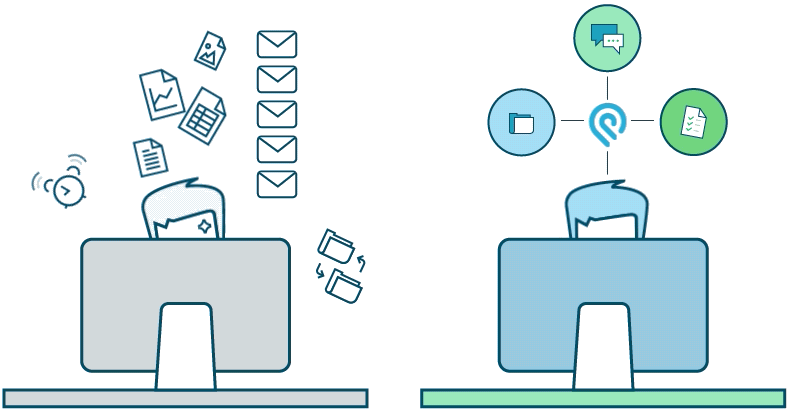
Technology has penetrated into our lives and occupied an important place there. A number of Internet users grows exponentially. This is especially true for a younger generation approaching all innovations with interest and enthusiasm. Modern students carry their phones everywhere, spend much time on entertaining apps and social networks.
Since the Internet is a space liked and regularly visited by learners, there is every reason to integrate mobile technologies into the educational process. Experts from Pro-Papers have analyzed the main types of mobile learning platforms, their features, and advantages. Proceed reading this article to find the best digital tools for your academic environment.
It is quite easy and cheap to create a mobile version of an educational website accessible from all devices and always depicting information correctly. A student can start working on a task at a computer, go to a park or a cafe, log in to one’s account on a site, and continue studies from the place where pause was taken. Also, the students have a great possibility to study easily and at any time that is more suitable for them. They usually choose https://edubirdie.net
Top 7 Mobile Machine Learning Frameworks –
- Fritz: Fritz is the machine learning platform for iOS and Android developers. Teach your mobile apps to see, hear, sense, and think.
- Core ML: With Core ML, you can integrate trained machine learning models into your iOS apps.
- TensorFlow Lite: TensorFlow Lite is an open source deep learning framework for on-device inference.
- Create ML: Use Create ML with familiar tools like Swift and macOS playgrounds to create and train custom machine learning models on your Mac.
- Turi Create API: Turi Create simplifies the development of custom machine learning models. You don’t have to be a machine learning expert to add recommendations, object detection, image classification, image similarity or activity classification to your iOS app.
- ML Kit: ML Kit beta brings Google’s machine learning expertise to mobile developers in a powerful and easy-to-use package.
- QNNPACK: QNNPACK (Quantized Neural Networks PACKage) is a mobile-optimized library for low-precision high-performance neural network inference. QNNPACK provides implementation of common neural network operators on quantized 8-bit tensors.
Types of m-learning platforms
1. Websites
It is quite easy and cheap to create a mobile version of an educational website accessible from all devices and always depicting information correctly. A student can start working on a task at a computer, go to a park or a cafe, log in to one’s account on a site, and continue studies from the place where pause was taken.
Many platforms save users’ steps, so there is no need to pass tests on?e more, and there will be bookmarks in publications a person was reading online. Resources available in real time whenever and wherever a student needs make the educational process more flexible, so everyone can compile a personalized learning schedule.
Top 6 Performance Auditing Tools
- Lighthouse – Analyzing tool for web apps and web pages.
- PageSpeed Insights – The tool that analyzes your page and gives recommendations for increasing downloading speed.
- PageSpeed – Web server modules that optimize your site automatically.
- Site Speed Checker – Compare the speed of your mobile site to others.
- Test Your Mobile Speed – The tool from Google that performs comprehensive speed check of the mobile site.
- Webpagetest – Website speed test from multiple locations using real browsers and at real consumer connection speeds.
2. Applications
In this case, learners download special mobile apps which may be used both online and offline, often provide more graphic opportunities and better user experience, have customized design and functions. They are very convenient for students spending much time in zones without Internet connection. For example, it is possible to learn when travelling in public transport or resting in a forest camp.
Both free and paid programs are available in app stores. Taking into account their wide diversity, everyone can find the most suitable products satisfying one’s needs, tailored to a certain major and learning style. Applications may be downloaded to a smartphone and installed within minutes. Many of them do not require registration. Software is updated automatically. You just should press “OK” button when a device offers to improve your apps.
Advantages of m-learning platforms
1. Multimedia
Young people are sick and tired of dull textbooks and formulas on a blackboard. It is not surprising that bright TV shows and video games distract them from learning. The educational process should become as engaging as entertainment resources, and mobile technologies contribute to these transformations.
Universities create digitalized databases with videos, presentations, and audios accessible to everyone. As a rule, professors post this content on an official website or provide links to sources where it can be downloaded.
2. Micro learning
The educational process is divided into small tasks. For example, students may perform an assignment or pass a short test after watching a video. Such homework does not overload learners and is deprived of a depressive effect characteristic to voluminous textbooks and laborious research projects. Young people can study the most challenging disciplines step-by-step, assembling a general picture from smaller details, elaborating each concept or rule in an entertaining way.
There is no need to make volitional efforts to sit at a table to start learning. Smartphones are our faithful companions. They are almost always in our bags or hands. Mobile apps are unobtrusive to a daily routine, create good academic habits, improve learners’ performance, can be used by working people organizing short educational sessions at lunch breaks. Therefore, it us much easier to get to work. Academic activities cease to be an unpleasant responsibility and turn to a natural part of young people’s lives.
3. Wide choice
In a traditional classroom, it may be hard for a visual learner to comprehend complex theories by listening to professor’s explanations and reading textbooks. In m-learning environment, students get more control over their learning sessions, can choose content corresponding to their natural inclinations and reach full academic potential.
4. Efficient teacher-student interaction
 It is uneasy for educators to interact with everyone at mass lectures with 100+ listeners. A professor may ask students to answer a question in an online chat and read the best answers aloud. Also, learners may compile a summary for each lesson, describe their impressions to give an educator an idea of how teaching approaches may be improved.
It is uneasy for educators to interact with everyone at mass lectures with 100+ listeners. A professor may ask students to answer a question in an online chat and read the best answers aloud. Also, learners may compile a summary for each lesson, describe their impressions to give an educator an idea of how teaching approaches may be improved.
M-learning platforms are especially helpful when learners face some challenges at home and cannot perform their assignments without the professor’s support. There is no need to wait for an on-campus consultation. Thanks to mobile messengers, feedback may be received almost instantly.
5. Teamwork
Students need to allocate time and find a suitable place to work on group projects. As a rule, they stay in a library after lessons, which may be inconvenient for persons attending extracurricular sections and working part-time. It is rather challenging to sync all young people’s schedules and tune on productive teamwork. Mobile learning platforms allow students to visit an online chat, express their ideas, and view materials shared by classmates whenever convenient. Also, it is a great platform for brainstorming since all messages are saved in a system, and no valuable idea would be lost.
6. Notifications
Time management apps remind students about important events, tasks with expiring deadlines, help to organize academic routine efficiently.
Top 16 Task Management Tools –
- Airtable – Mix of spreadsheet and database to help organize work.
- Any.do – Simple interface, packed with features, currently the favorite to-do list manager at Lifehacker.
- Hitask – Easy Project and Task Management for Teams.
- KanbanFlow – Kanban method task board with Pomodoro technique.
- OmniFocus – A Getting Things Done based task manager for Mac OS X and iOS.
- Pomolectron – A pomodoro app for your menubar/tray.
- Remember the Milk – Great at managing tags for to-dos and location based tasks.
- Taskade – Simple and collaborative task lists for teams.
- Taskwarrior – An open source command line task manager. Flexible, fast, efficient, and unobtrusive.
- Timing – Automatic time and productivity tracking for Mac. Helps you stay on track with your work and ensures no billable hours get lost if you are billing hourly.
- Todo.txt – Tired of having complicated apps to organize your tasks? Todo.txt is a technique that uses a single .txt file to help you get the job done.
- Todoist – Powerful and cross-platform productivity tool.
- Topydo – A powerful todo list application using the todo.txt format, positioned between todo.txt CLI and Taskwarrior.
- Trello – Kanban method task board.
- VivifyScrum – Agile project management app for teams that deliver. Customizable Scrum and Kanban boards.
- Wunderlist – Cross-platform, desktop and mobile to-do list manager with apps for iOS and Android, Windows, OS X, and Linux.
7. Cost reduction
The scientific world does not stand still. There are always new trends, studies, and discoveries. This means that textbooks and learning manuals should be regularly updated. Low-budget schools cannot afford it and continue using old materials. As a result, learners get misleading and practically inapplicable information. Everything is much easier in the digital space. It is just necessary to upload revised documents to a school website.
Also, educational institutions do not have to spend money on campus devices. Almost everyone has a tablet or a smartphone today. Young people like the idea of bringing their own gadgets to a class and applying customized settings. Of course, app development requires some spending. But once created, mobile programs may serve thousands of students. Therefore, they are less expensive than textbooks in the long run.
You may also like:- Top 7 Commercial Linux Distributions
- Why Do I Need a Website?
- Reinforcement Learning in Real-world Applications: The Latest Successes and Challenges
- Various Python Libraries for developing RESTful APIs
- Top 7 NodeJS Frameworks You Need To Know
- How Buying Instagram Followers Can Help Businesses Soar
- How To Find Gaps In Your Cybersecurity And How To Address Them
- How to close the site from indexing using robots.txt
- Internet Security With VPN – Why Do You Need It
- How to Fix The DLL Missing Error in Windows 7?










